 |
|
Hakuto-R (Falcon 9) 11 December 2022 |
Space Launch Complex 40 Cape Canaveral Space Force Station |
A SpaceX Falcon 9 rocket launched ispace’s HAKUTO-R Mission 1 – the first privately-led Japanese mission to land on the lunar surface – from Space Launch Complex 40 (SLC-40) at Cape Canaveral Space Force Station at 2:38 a.m. on 11 December 2022. Also onboard this mission is NASA’s Jet Propulsion Laboratory’s Lunar Flashlight as well as two small lunar rovers built by Japan and the United Arab Emirates respectively. Following stage separation, the first stage returned to Earth to land on Landing Zone 2 (LZ-2) at Cape Canaveral Space Force Station. The first stage booster supporting this mission previously launched SES-22 and three Starlink missions. |
|
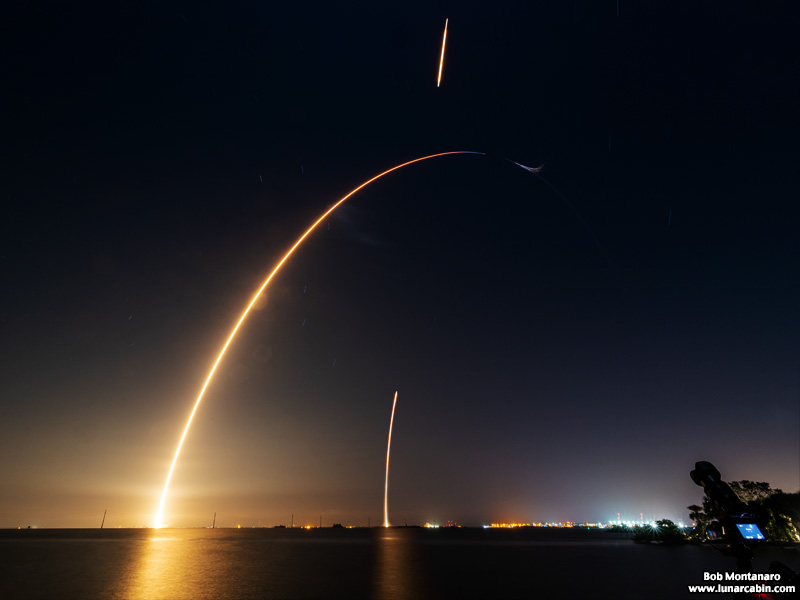 |
|
| A time exposure shows the Hakuto-R launch, then the entry burn and landing burn of the first stage landing at Landing Zone 2 at Cape Canaveral Space Force Station. | |
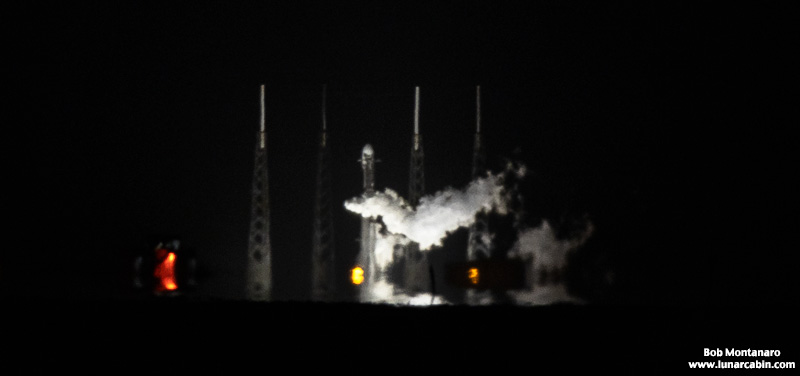 |
|
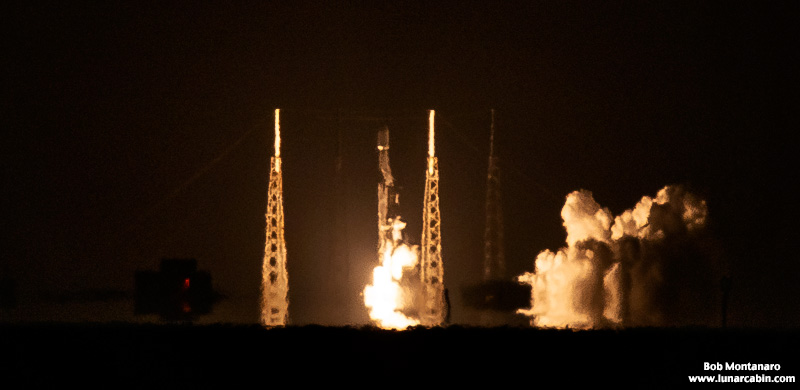 |
|
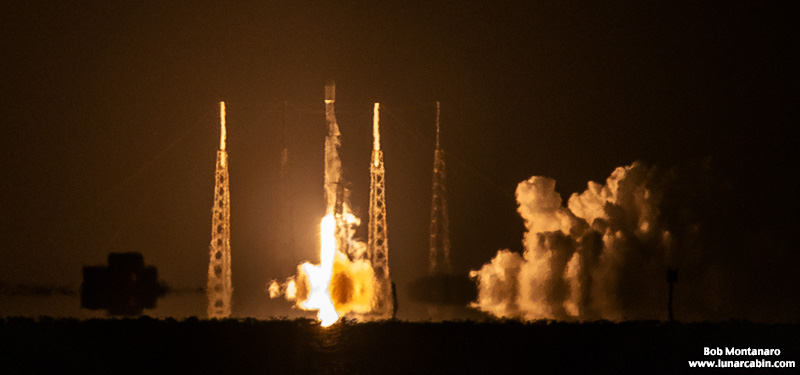 |
|
 |
|
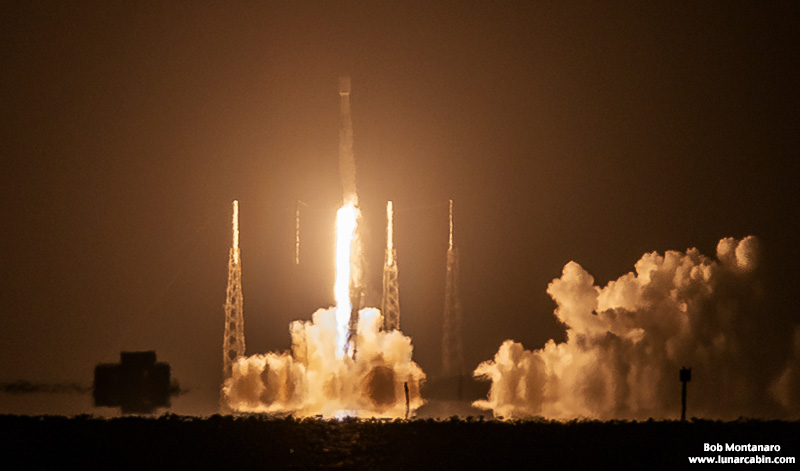 |
|
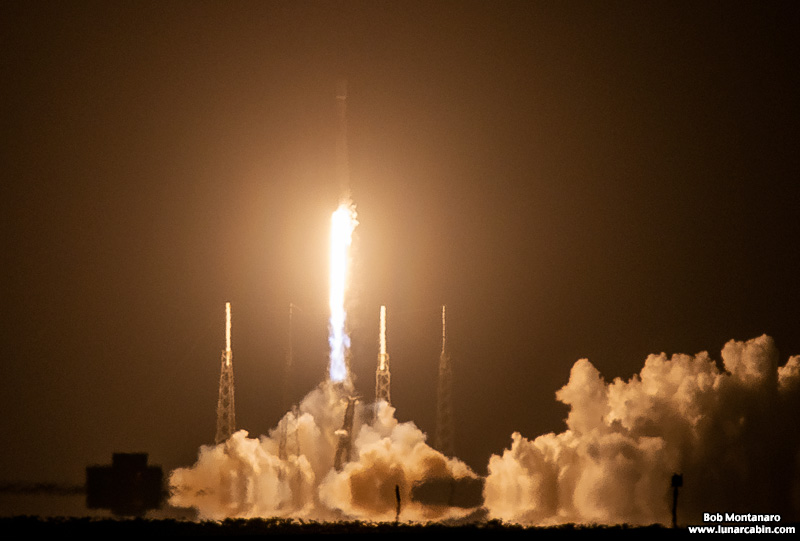 |
|
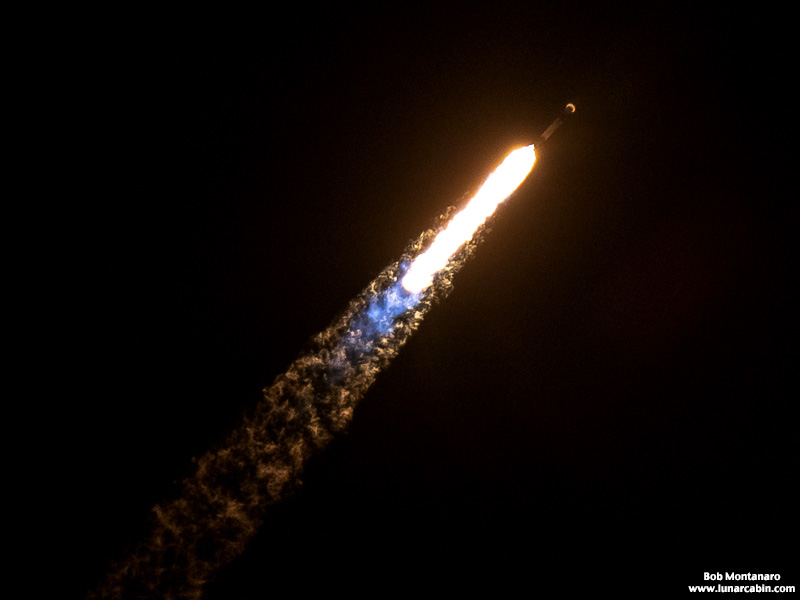 |
|
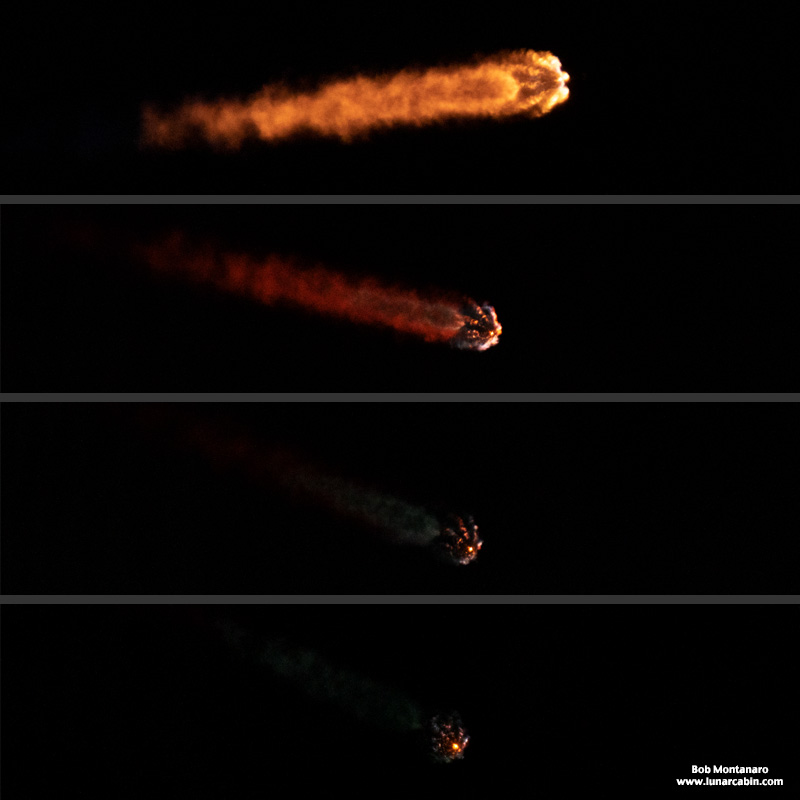 |
|
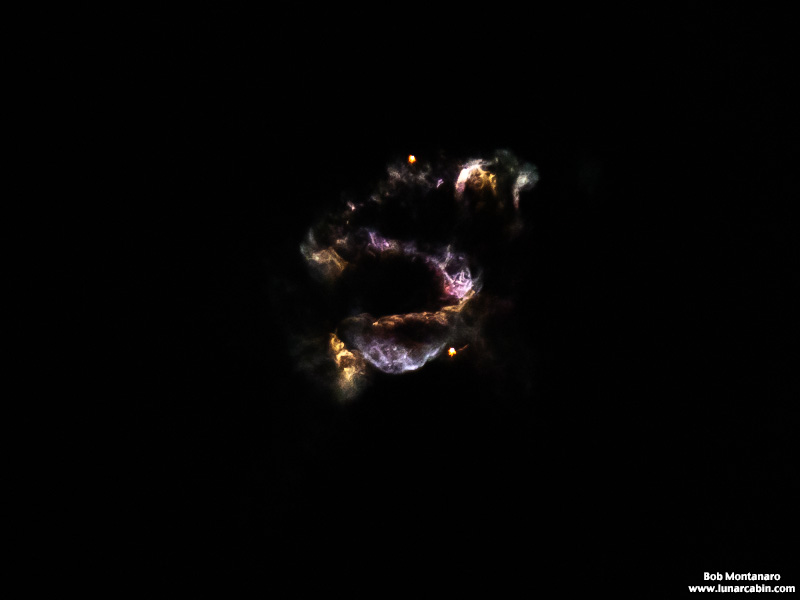 |
|
| The interplay of flaming exhaust gasses as the first and second stage separate and head off in their respective directions: the first stage to land at LZ-2 and the second stage continuing on into orbit. | |
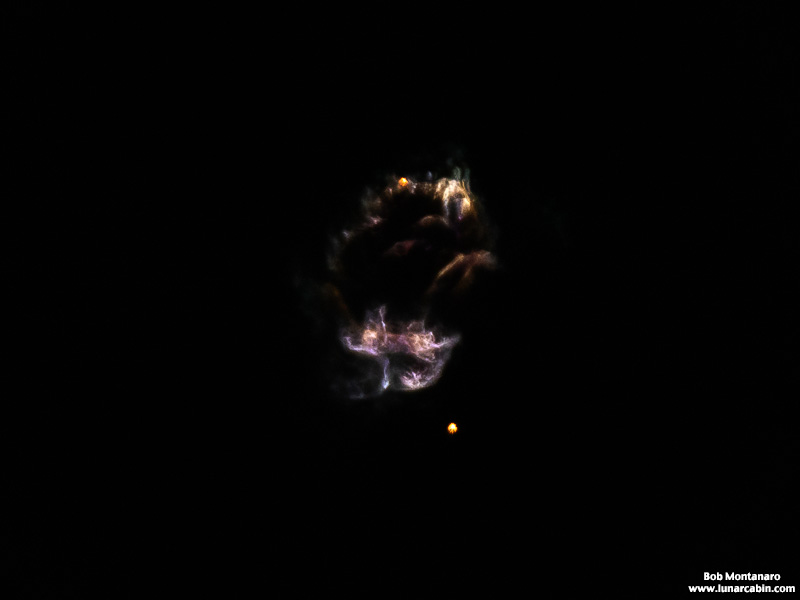 |
|
 |
|
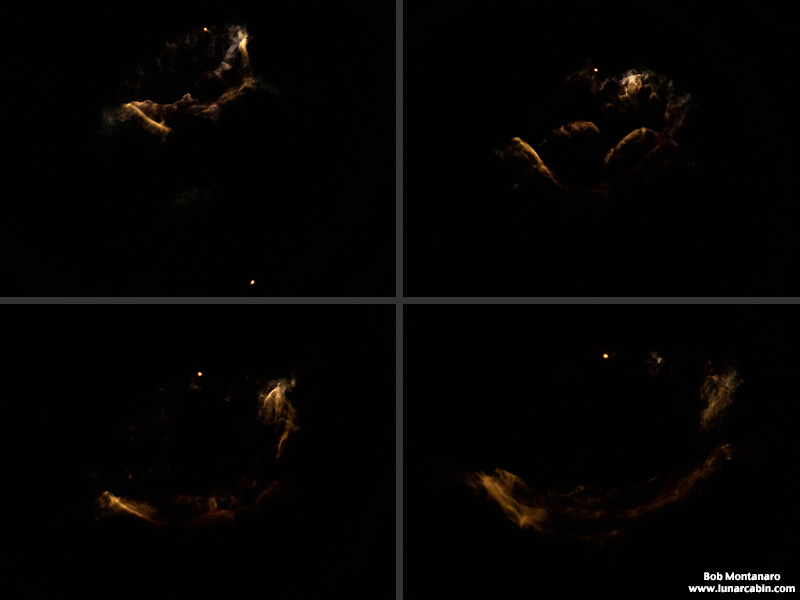 |
|
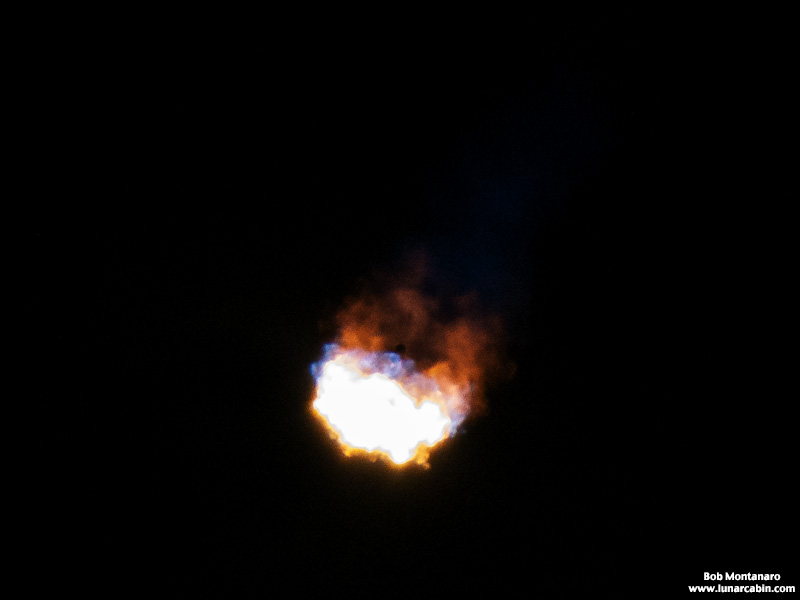 |
|
The first stage entry burn. The booster can just be made out inside the ball of flame. |
|
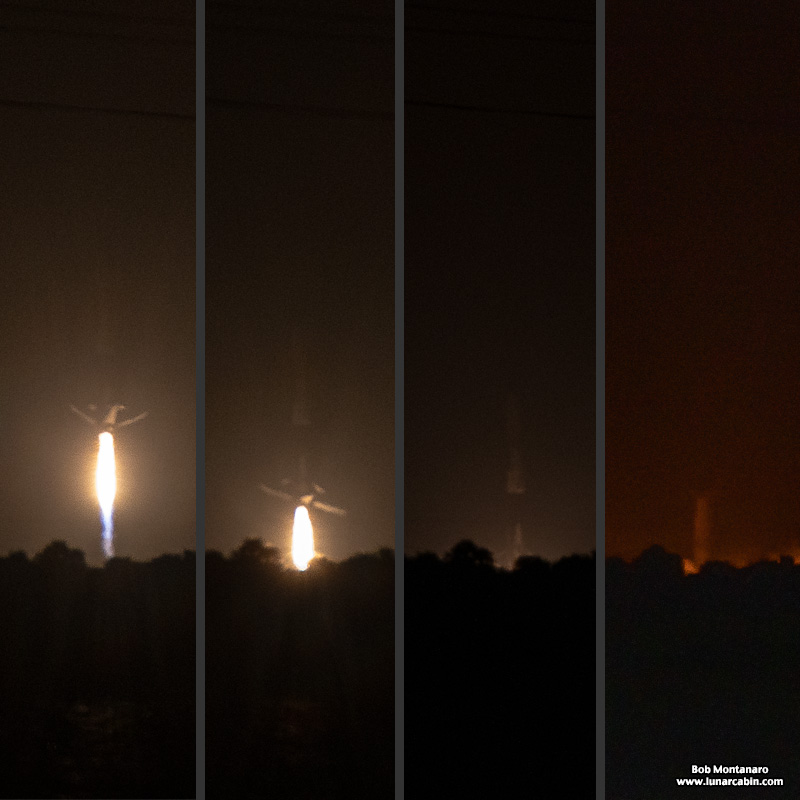 |
|
| The last few moments of the landing at LZ-2 shows the booster deploying its landing gear before disappearing behind the trees. | |
iSPACE HAKUTO-R MISSION MILESTONE GRAPHIC |
|
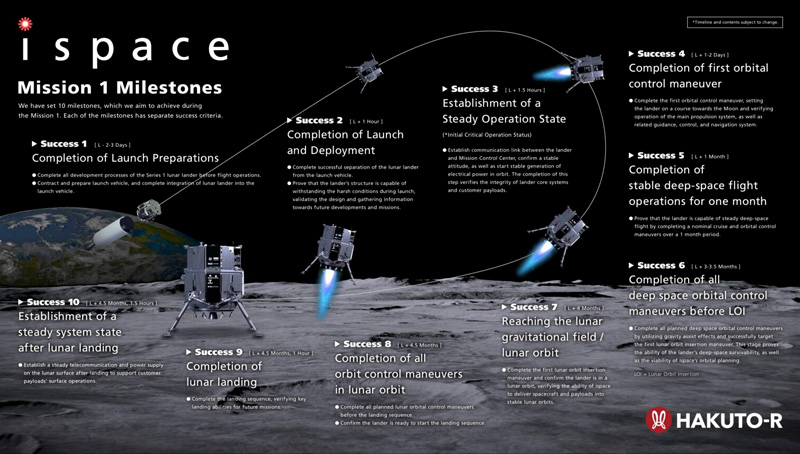 |
|
EXCERPTS FROM A NASA LUNAR FLASHLIGHT MEDIA RELEASE |
|
 |
|
Artist's conception of Lunar Flashlight in operation over the Moon. Image Credit: NASA |
|
| Roughly the size of a briefcase, Lunar Flashlight is a very small satellite being developed and managed by NASA's Jet Propulsion Laboratory that will use near- infrared lasers and an onboard spectrometer to map ice in permanently shadowed regions near the Moon's south pole. The observations made by the low-cost mission will provide unambiguous information about the presence of water ice deposits inside craters that would be an valuable in-situ resource for future Artemis missions to the lunar surface. | |
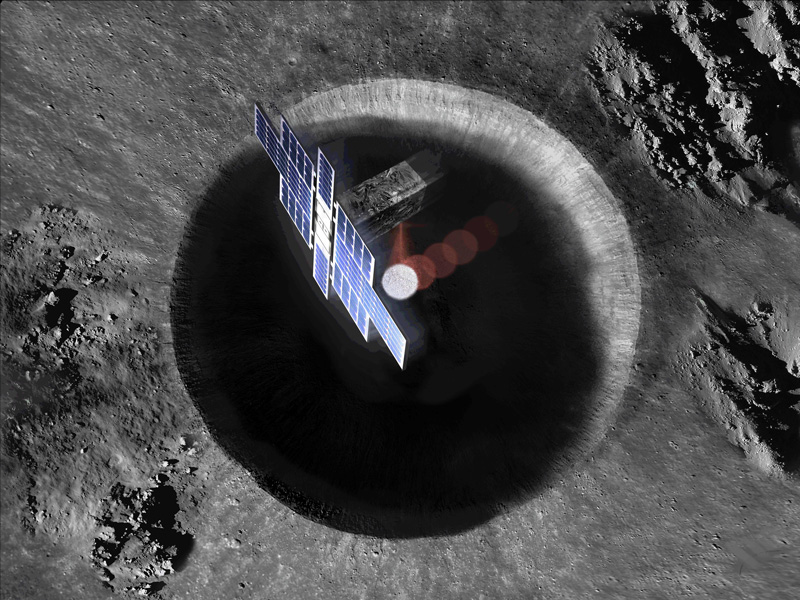 |
|
Artist's conception of Lunar Flashlight in operation over the Moon. Image Credit: NASA |
|
As a technology demonstration mission, Lunar Flashlight will showcase several technological firsts, including being the first mission to look for water ice using a laser reflectometer and the first planetary CubeSat mission to use "green" propulsion - a propellant that is less toxic and safer than hydrazine, a common propellant used by spacecraft. The mission was selected by NASA's Advanced Exploration Systems in 2014 and is currently funded by the Small Spacecraft Technology program within NASA's Space Technology Mission Directorate. Credit: NASA/JPL-Caltech |
|
All contents copyright Lunar Cabin |
|